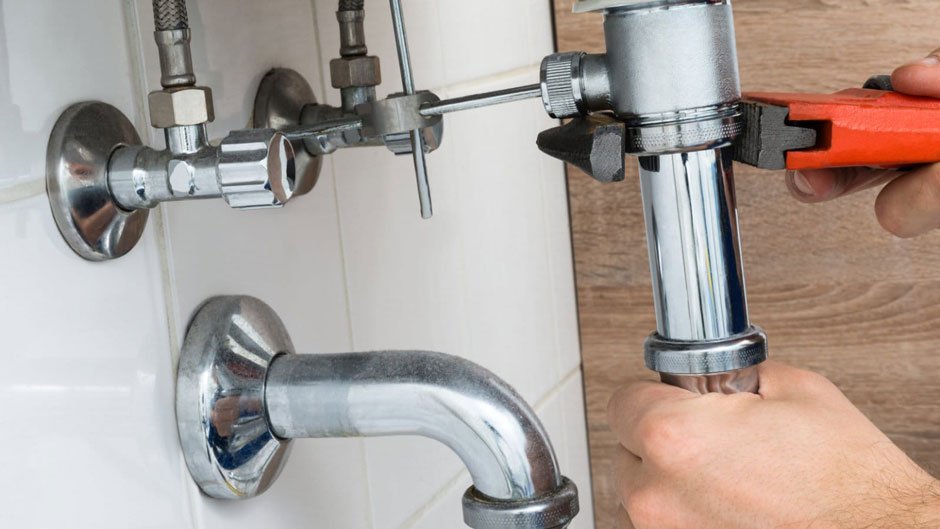 Owning a home comes with plenty of responsibilities, and maintaining the plumbing system is one of the most crucial, notes SGI Phoenix Management. Yet, it’s often overlooked until a problem arises. Without regular upkeep, plumbing issues can lead to water damage, costly repairs, or even health hazards like mold. The good news? You can avoid most of these headaches with a few simple steps.
Owning a home comes with plenty of responsibilities, and maintaining the plumbing system is one of the most crucial, notes SGI Phoenix Management. Yet, it’s often overlooked until a problem arises. Without regular upkeep, plumbing issues can lead to water damage, costly repairs, or even health hazards like mold. The good news? You can avoid most of these headaches with a few simple steps.
By incorporating routine plumbing maintenance into your schedule, you can save yourself from unexpected repair bills and protect the overall health of your home. Let’s dive into some essential plumbing maintenance tips that every homeowner should know to keep their system running smoothly and efficiently.
Regularly Inspect for Leaks
One of the easiest ways to prevent major plumbing problems is by inspecting for leaks regularly. A small, unnoticed drip can lead to wasted water and sky-high utility bills, not to mention the potential for water damage to walls, floors, and ceilings.
What to Check
Faucets, toilets, and the pipes under your sinks are prime candidates for leaks. Additionally, take a look at any exposed pipes in your basement or utility rooms. These areas are prone to wear and tear, especially in older homes.
Why It’s Important
Even the smallest leaks can waste gallons of water over time. Beyond that, prolonged exposure to moisture can cause rot, mold growth, or structural damage, which can be incredibly costly to repair.
How to Do It
Spotting a leak isn’t always obvious. Start by checking around pipe connections for any signs of moisture, puddles, or rust. Also, keep an ear out for dripping sounds or hissing. If you suspect a leak, it’s wise to address it immediately—whether by tightening a connection or calling a professional for help.
Clear Out Drains and Traps
Clogged drains can lead to unpleasant odors and even water damage if left unchecked. By regularly clearing out drains and traps, you’ll avoid these issues and maintain smooth water flow.
Why
Hair, soap scum, and kitchen grease are all culprits that can slowly clog your drains, causing backups and blockages over time.
DIY Methods
You don’t need to rely on harsh chemical cleaners, which can damage your pipes in the long run. Instead, try natural solutions like pouring a mixture of baking soda and vinegar down the drain, followed by hot water. A plumber’s snake is also handy for physically removing stubborn clogs.
Preventative Maintenance
To prevent clogs from forming in the first place, install drain strainers to catch debris before it goes down the pipes. This small step can save you a big hassle down the road.
Maintain Your Water Heater
Your water heater is one of the most important appliances in your home. Ensuring it works efficiently can save you money and prevent the risk of cold showers on chilly mornings.
Flush the Tank Annually
Over time, sediment builds up in the bottom of the water heater, reducing its efficiency and potentially leading to a breakdown. Flushing the tank annually can help remove this sediment and extend the life of your unit.
Check the Temperature Setting
For safety and efficiency, it’s a good idea to keep your water heater set to 120°F. This prevents the water from getting too hot, which can scald you, and it also reduces wear and tear on the system.
Inspect for Signs of Rust or Corrosion
Especially with older water heaters, rust or corrosion can indicate that your unit is nearing the end of its life. If you notice any of these signs, it’s best to consult a professional to assess whether it’s time for a replacement.
Keep an Eye on Water Pressure
Low or fluctuating water pressure can be an early sign of underlying plumbing issues. It’s essential to monitor your home’s water pressure regularly.
Optimal Pressure Range
The safe range for water pressure is between 40 and 60 PSI (pounds per square inch). Anything outside this range could indicate an issue, like a clog or a leak.
Signs of Issues
If you notice that your faucets are suddenly releasing a weak flow of water, or if the pressure fluctuates frequently, it may be a sign that your pipes are experiencing a blockage or corrosion.
How to Measure
Water pressure gauges are inexpensive and easy to use. Attach one to your outside spigot and turn on the water to get an accurate reading. If your pressure is consistently too low or high, it may be time to call in a professional.
Check Your Sewer Line
Your sewer line is one of the most critical parts of your home’s plumbing system, but it’s often out of sight and out of mind.
Warning Signs
Gurgling drains, foul odors, or slow drainage are all signs that something may be wrong with your sewer line.
Why Maintenance Is Critical
Sewer line issues can quickly escalate into major problems if left unchecked, resulting in costly repairs or even the need to replace the entire line. Regular sewer line inspections by a professional can help catch these issues early and prevent severe damage.
Test Your Sump Pump
If you have a sump pump, especially in a basement, it’s essential to ensure it’s working properly before rainy seasons.
Why It Matters
A sump pump helps prevent flooding by removing water that collects in a sump basin. Without it functioning correctly, you risk water seeping into your home and causing significant damage.
How to Test
Pour a bucket of water into the sump pit and check if the pump activates. If it doesn’t, or if it runs for too long, there might be an issue with the float or the pump itself. Regular testing ensures you catch any problems before the heavy rains hit.
Prevent Frozen Pipes in Winter
Frozen pipes are a nightmare for homeowners. When water inside pipes freezes, it expands, which can cause the pipes to burst and flood your home.
Insulate Exposed Pipes
Pipes in basements, attics, and outdoor areas are especially vulnerable to freezing in the winter. Adding insulation can help protect these areas from extreme cold.
Drip Faucets in Extreme Cold
On particularly cold nights, allow your faucets to drip slightly. The running water helps prevent the pipes from freezing solid.
Shut Off Outdoor Water Sources
Before winter sets in, shut off the water supply to outdoor spigots and drain any hoses to avoid ice expansion, which can crack pipes and cause leaks.
Avoid Chemical Drain Cleaners
While it might be tempting to grab a bottle of chemical cleaner for a quick fix, these solutions often do more harm than good.
Why It’s Dangerous
Chemical cleaners can corrode pipes over time, leading to leaks or pipe failure. In some cases, they can even worsen blockages.
Safer Alternatives
Instead of relying on harsh chemicals, try using a plunger or a plumber’s snake to clear out minor clogs. For more severe issues, it’s always best to call a professional plumber who can safely address the problem.
Regular plumbing maintenance is the key to avoiding costly repairs and ensuring the longevity of your home’s system. By taking the time to inspect for leaks, maintain your water heater, clear drains, and watch for early warning signs, you can save yourself from unexpected headaches.
When it comes to plumbing, an ounce of prevention truly is worth a pound of cure. So, follow these essential tips and consider scheduling regular inspections with a professional plumber to keep your home’s plumbing in top shape for years to come.





Leave a Reply